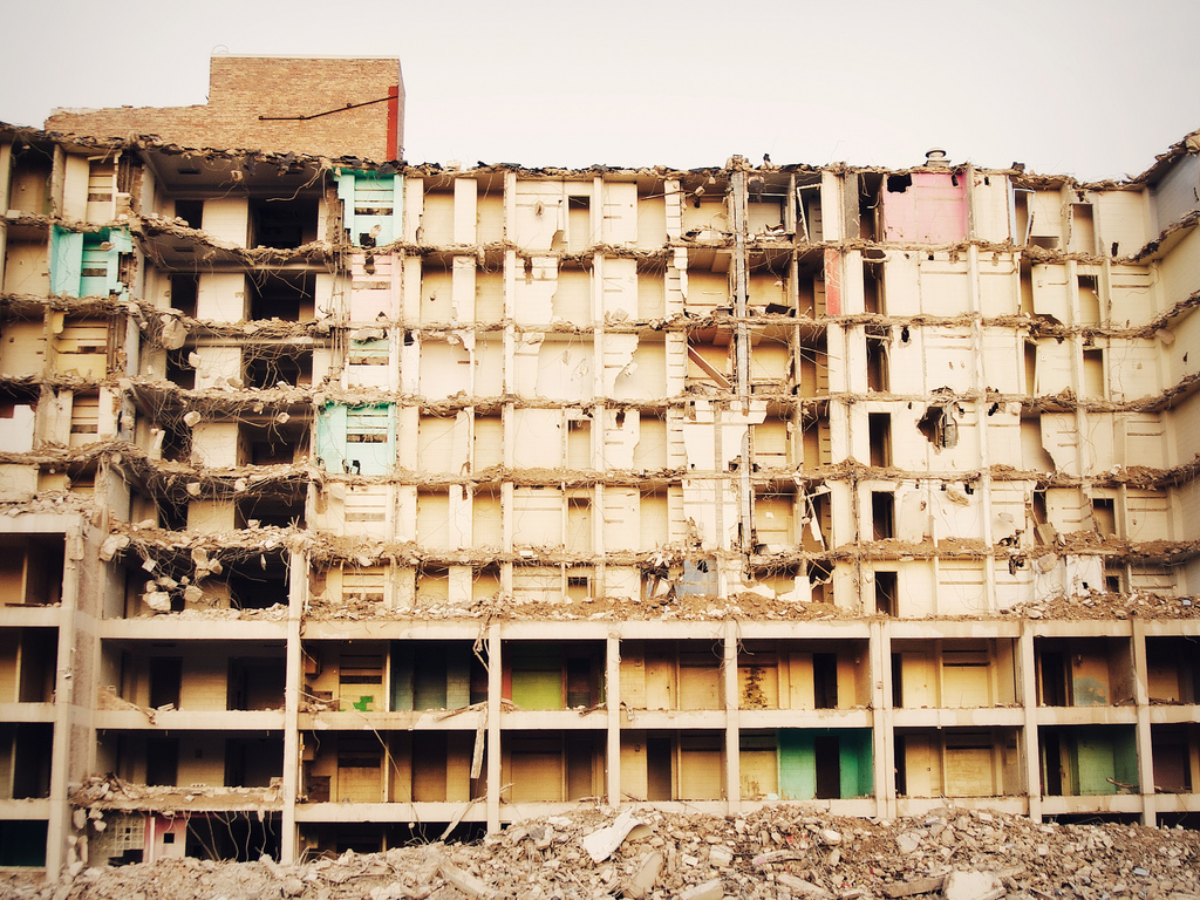No Welcome Home For All Former Harold Ickes Residents
By Natalie Moore

No Welcome Home For All Former Harold Ickes Residents
By Natalie MooreMore than 800 families lived in the Harold Ickes public housing complex in 1999, but a vast majority of them will not be able to return when the Chicago Housing Authority remakes the property into a mixed-income community.
Willie Reed, 56, said he was one of the last residents in the housing complex in 2010 and wants to move back.
“I wanna know why I can’t return. I didn’t do nothing wrong to nobody. I was raised down there and would like to come back,” Reed said.
He said CHA staff told him he picked Dearborn as his final housing selection. If he did, he didn’t mean to.
Reed’s complaint is a familiar one. The CHA’s controversial plan to demolish the city’s public housing complexes and replace them with mixed-income communities means only a fraction of residents will come back.
This trend has played out in places like Cabrini Green, Ida B. Wells and Robert Taylor homes, and the demolition of the Ickes housing complex is just the latest example.
In 1999, there were 823 units occupied at the Ickes complex, which had a capacity of 1,000. But all of those residents were gone by 2010, when all of the buildings were demolished.
The CHA in October approved a $3.6 million master plan and pre-development loan to rebuild on the 11-acre Ickes site, a prime location where the South Loop meets the South Side. CHA officials said nearly a decade ago that the new development would include about 400 public housing units — or less than half of the number of units provided by the old complex.
Now the new promise is 244.
“It seems as if they’re continuing the push of low-income blacks out of the community and using public dollars to do so,” said Rod Wilson, of the Lugenia Burns Hope Center, a community group that works with public housing residents.
Since 1999, CHA has been tearing down public housing to create mixed-income communities under its Plan for Transformation, a program begun by then-Mayor Richard M. Daley to completely overhaul Chicago’s public housing. The idea behind the plan is poorer people should not be concentrated in one place; they should get not only new housing but improved communities.
Typically, mixed-income communities are a third public housing, a third affordable and a third market rate.
But the CHA’s master plan for Ickes doesn’t follow the one third formula. More than half the housing will be for households with higher incomes, with 53 percent of housing slated for market rate. Only 19 percent of units will be set aside for affordable housing, and 28 percent will be public housing.
Wilson said even former Ickes residents who would love to return cannot fight anymore. They’re tired.
“It’s difficult because many people are fed up with the length of time. Some folk are like, ‘Ain’t nothing gonna happen. They’re not going to let us come back.’ It’s just sad because some people feel like the CHA turned their back on them,” Wilson said.
Angela Brooks, a development manager for the CHA, acknowledges the criticisms of the CHA about not bringing back enough public housing.
“That’s always going to be a struggle for us,” Brooks said. “We’ve had resident meetings. I’m sure we’ll hear more. There’s not going to be enough.”

Construction on phase one of the Ickes redevelopment begins next year. The Community Builders, a nonprofit developer for mixed-income housing, will oversee housing, and McCaffery Interests is the lead developer for new site’s retail section.
The Ickes site is in a bustling area with valuable land. It’s east of Chinatown. There’s a new Green Line ‘L’ station at Cermak. The new DePaul University stadium will be nearby.
Currently, the Ickes land is not completely vacant. The city did a land swap with the CHA that brought the elementary school National Teachers Academy and the high school track for Jones College Prep.
One of the lingering issues with the CHA’s mixed income plan in recent years has been the slowdown in for-sale units at some sites. The Ickes developers have added flexibility in the design and made it more dense in case, for example, rentals are going faster than home ownership. In this design, there wouldn’t be big tracts of vacant land that could undermine the development’s desirability.
“They’re [rental and for-sale] two different markets and that’s okay. They work on different cycles. The way we’re thinking about the site here reflects that reality. Say there’s a downturn in homeownership purchasing that we have a little better accommodation for that,” said Will Woodley, of The Community Builders, one of the housing developers.
CHA CEO Eugene Jones said Ickes is part of a larger strategy of rebuilding the South Side where public housing once was along State Street. Much of the land is now empty, like an urban prairie. The CHA has long been criticized for fostering demolition rather than development.
“We’re trying to look at here, at Cermak and State, and go all the way down and build up the whole corridor with housing and retail,” Jones said.
JoAnne Williams is the Ickes resident representative for the site’s planning group. She said she wanted more public housing units. But even more than numbers, she has a message for housing officials about her former neighbors.
“I just wanted them to give a fair chance, equal opportunity for everybody,” she said. “Not just the market or affordable but for the public housing because this is what was promised to the public housing residents when they put all of this in transformation.”
Natalie Moore is WBEZ’s South Side Bureau reporter. You can follow her at @natalieymoore.
